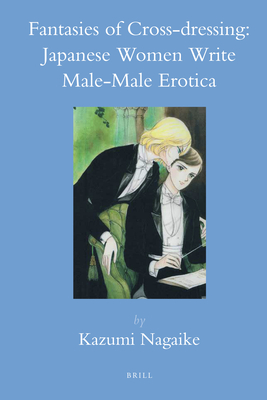
Fantasies of Cross-dressing: Japanese Women Write Male-Male Erotica by Kazumo Nagaike is an amazing work for thinking about BL, especially from a psychoanalytic perspective. She uses large Freud and Klein to (with an influence of Lacan), to investigate narratives of Japanese women writing about male-male erotic/romantic relations. She translates three different stories from woman authors who depict male-male relationships at the end of the novel. In the first half she investigates each of these stories from a psychoanalytic perspective to better understand the way women's fantasies of male-male erotic relationships relate to current marginilization/gender heirarchies women internalize and face in society. The chapter I found most valuable to my studies was Chapter 7 which investigates contmeporary yaoi production. She describes how yaoi creates a "bisexual or androgynous" space due to the combination of woman authors (and their fantasies) rendering male-male homosexual relationships. This combined the pleasures that the characters within yaoi receive/create (those being anal/phallic but also the significant amount of wetness often illustrated aroud the anus and the orgasms often depicted we see their also being pleasure that evokes the vaginal). Plus, yaoi often does not render the penis/anus in any sort of detail, this is sort of due to Japanese censorship laws, but also a consistent creative choice throughout much of the genre. This androgynous space is theorized by using Francette Pacteau's ideas I touch on in the description of the book Formations of Fantasy This idea of the androgynous creative space that yaoi authors create is something I realy appreciate. It encourages us to think about the way yaoi provides a meaningful place of fantasy formation for women authors that queers current binaries of gender. One may think women are just "fetishizing gay men" by depicting these seemingly homosexual relationships, however, this theorization complicates that by drawing attention to the fact these are depictions of women's fantasies with no claim to be representing actual or "real" gay relationships. This androgynous space of yaoi is something I have come to appreciate in my own continued academic ruminations on yaoi. I go more in-depth about what this idea of the androgynous is in my other review of Formations of Fantasy
In summary, I think this book is a great resource if you want a psychoanalytic perspective on yaoi production or want to investigate Japanese woman authors who wrote narratives depicting homosexual men.
